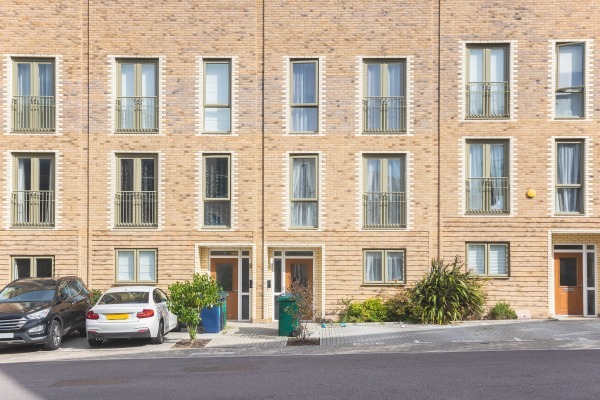
As we move further into 2025, the UK property market remains a dynamic and evolving landscape influenced by an array of economic, environmental, technological, and regulatory factors. Both seasoned investors and new developers continue to ask if property development is still profitable. This in-depth analysis explores current trends, opportunities, and challenges facing the UK property development industry, highlighting where potential profits may still be achievable.
The Current State of the UK Property Market

The UK property market in 2025 continues to navigate through significant economic shifts and fluctuating market conditions. Although some areas, particularly urban centres, remain vibrant, other regions struggle with slower growth or stagnation. This disparity makes careful market analysis more crucial than ever.
Economic factors such as rising interest rates and inflation have had a direct impact on borrowing costs, affecting developers’ financial planning. Despite these challenges, property continues to attract investment as a stable asset class, especially in select regions and market segments.
Regional Hotspots and Urban Regeneration
Urban regeneration projects remain a significant driver of property development opportunities in the UK. Cities like Manchester, Birmingham, Liverpool, and Leeds have experienced ongoing redevelopment and infrastructural upgrades. These regions continue to attract young professionals and businesses, creating sustained demand for residential and commercial properties.
Infrastructure projects provide significant uplift to adjacent property values, attracting savvy investors keen to leverage early opportunities in these high-growth areas.
Sustainability: A Key Investment Opportunity
Sustainability has transitioned from a trend to a fundamental requirement in the property development sector. New developments increasingly incorporate eco-friendly practices, renewable energy solutions, energy-efficient designs, and sustainable materials. Investors capitalising on this growing demand have experienced substantial market appeal and improved profitability.
Government incentives and changing consumer preferences are supporting the shift toward greener developments. Properties offering reduced carbon footprints and lower energy bills command premium market values, providing substantial returns on investment.
Investors entering the BTR market find opportunities for steady rental income streams, particularly in densely populated urban centres and emerging commuter towns. Developers focusing on creating tailored, attractive rental communities stand to gain significantly from ongoing demand and rising rental rates.
Technological Advancements and Smart Homes
2025 sees a continued surge in demand for smart home technologies. Innovations such as smart heating, advanced security systems, voice-controlled lighting, and energy management tools are increasingly viewed as standard rather than luxury additions.
Developers integrating these technologies can differentiate their properties significantly, appealing to tech-savvy buyers and investors. Properties equipped with sophisticated technology features often achieve higher valuations and quicker sales, providing a competitive edge and stronger profitability.
Commercial Property Development Trends
Commercial property development remains resilient, particularly in sectors such as logistics, warehousing, and flexible office spaces. The rise of online retail continues to bolster demand for strategically located distribution centres and logistics hubs, particularly along major transport corridors and near urban areas.
Office spaces are adapting to hybrid working patterns, with demand shifting towards flexible, technologically equipped environments that facilitate remote and collaborative working. Investors attuned to these shifting commercial needs are finding lucrative opportunities within this segment.
Navigating Regulatory Challenges
The regulatory landscape in 2025 is more stringent, impacting planning permissions, environmental compliance, and construction standards. While these regulations aim to improve sustainability and safety, they pose additional challenges and costs for developers.
Effective project planning, detailed regulatory compliance strategies, and early engagement with planning authorities are essential for mitigating delays and additional costs. Developers who proactively manage these elements can maintain profitable margins despite increased complexity.
Financial Considerations and Market Dynamics
Rising material costs and labour shortages continue to impact the profitability of construction projects. Combined with higher borrowing costs, developers must carefully manage project budgets and timelines. Successful developers now place greater emphasis on detailed financial analyses and contingency planning to navigate economic volatility.
Securing favourable finance deals, such as fixed-rate loans and strategic partnerships, can substantially mitigate financial risks, allowing developers to protect their profit margins effectively.
Opportunities in Emerging Property Sectors
Several emerging sectors are gaining attention from developers and investors:
Senior Living and Healthcare Facilities
The UK’s ageing population is driving substantial demand for senior living accommodations and healthcare facilities. Purpose-built retirement villages, assisted living complexes, and care homes offer attractive long-term investment opportunities.
Student Accommodation
Student housing remains a strong market, driven by consistent university enrolments and international student demand. High-quality, purpose-built student accommodation offers developers stable rental income and attractive investment yields.
Mixed-Use Developments
Mixed-use developments, combining residential, commercial, retail, and leisure elements, continue to gain popularity. These versatile projects offer diversified income streams and increased resilience against market fluctuations, providing sustained profitability.
Developers who prioritise meticulous planning, site selection, and feasibility analyses position themselves better to withstand market challenges, maintain profitability, and seize opportunities as they arise.
Profitable Prospects Remain in 2025
Despite the challenges of increased costs, tighter regulations, and economic uncertainty, the UK property development market in 2025 still offers significant profitability potential. Opportunities lie particularly within sustainable developments, technology integration, regional regeneration zones, and specific sectors like build-to-rent, logistics, senior living, and mixed-use projects.
The key to ongoing profitability involves proactive market analysis, innovative approaches to sustainability and technology, and careful management of financial and regulatory risks.
Disclaimer
This blog is intended for informational purposes only and does not constitute financial advice. Always consult with a professional financial advisor or industry expert before making any property investment decisions.

